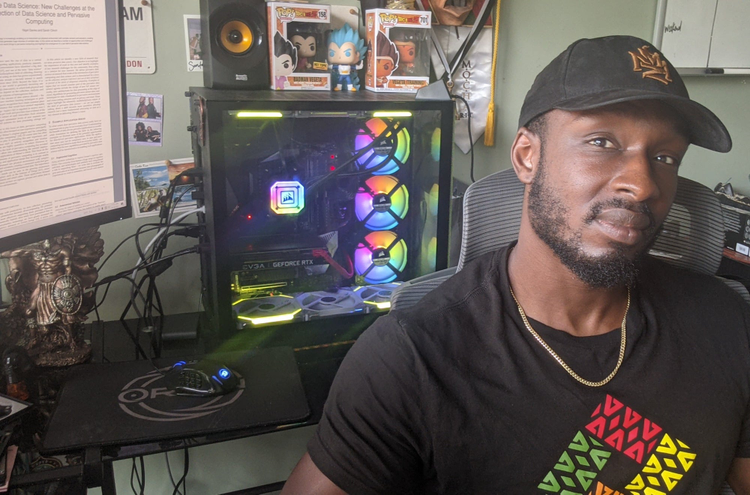Adobe Research intern Cory Ilo talks about the possibilities in AR & VR

At Adobe, internships are more than mere on-the-job training; we encourage our interns to dream big, and we equip them with critical opportunities to learn, build community, and make an impact. We’re featuring their experiences here on Adobe Life to provide a glimpse of how these extraordinary people are contributing to Adobe’s mission of changing the world through digital experiences.
Working on his PhD, Research intern Cory Ilo was unsure of where his career path might head. After spending the summer working with the innovative researchers at Adobe, Cory says he has a clearer vision and is now more excited about his work in augmented reality and virtual reality. We spoke with him to learn about his experiences.
Which university are you currently enrolled in and what is your internship title?
I’m a rising third year working on my PhD at Virginia Polytechnic Institute and State University (Virginia Tech), and I’m a Research Intern in augmented reality and virtual reality. I want to be a research scientist in the industry, doing work like what I’ve done this past summer at Adobe.
What about joining Adobe attracted you?
Adobe does a lot of research in AR and VR, which is what I’m really interested in. For my friends interning elsewhere, their projects are often dictated to them, but you get to drive your own research here. I have a research mentor, but the direction my research takes is up to me, which is exciting and impressive. That level of autonomy gives the practice you need when you actually make it into the industry and drive your own research.
What is your main project this summer?
I’m essentially investigating the best way to provide notifications in VR. Let’s say your significant other is coming home and they’re texting you about the chicken in the freezer, but you’re playing Skyrim having the time of your life. You’re cut off from that reality, immersed in this other one; how do we get that information to you without ruining your experience? Where spatially do we place the notification, and how and when do we give it to you? We don’t want it to pop up in the center of your screen or anywhere that obscures your view or disrupts the game, for instance.
What interested you about VR and AR research?
I’m really big on gaming and Discord. That’s where I started thinking about the notification issue: Discord notifications show up in the same spot, regardless of what’s going on in the game. For example, I’m playing Call of Duty: Warzone, and a Discord notification throws me off. That split-second is enough to get me killed, and now I’m in 16th place in Battle Royale. No one likes that, but now carry that idea over to AR in some future application. If you mess up in VR, you lose or have to restart a game. Imagine you’re wearing AR glasses or have a heads-up display in your car, and you get a notification in the wrong spot. That could potentially be a lot more dangerous.
On top of that, one of my big dreams is to eventually make AR games where your body is truly the controller a reality. We don’t have the technology for it just yet, but it’s only a matter of time.
What has it been like working virtually as an intern?
I like being a virtual intern because there’s so much convenience and it’s still incredibly collaborative. I’m still doing the same level of work as the research that I’d be doing back at school in the lab, except from the comfort of my own home. The other side of that coin is keeping a handle on “work-life balance,” especially as a PhD student, but my research mentor set the tone within the first week that at Adobe it’s about finding work-life integration, where you blend your passions with your work.
Adobe also does a great job of making us not feel isolated, with things like Donut Chats; Donut is a plugin for Slack that randomly pairs you with other interns and Adobe researchers. I’m able to ‘meet’ with other people that work within the organization, and it’s been a great experience to learn about them and their work.
Have you learned anything at Adobe that you’ve carried over to other parts of your life?
Doing this work at Adobe has pushed me to be a bit more inquisitive about my surroundings and how technology is going to move forward. I look at my research mentor and other people I’m surrounded by at Adobe, and I see my dream is very much possible. With a PhD, often the options you have are to be a professor or to launch a startup. I don’t necessarily want to teach, and building a business doesn’t spark my fire. Adobe has shown me that my dream has legs, so I’m fired up to keep spreading in that direction.